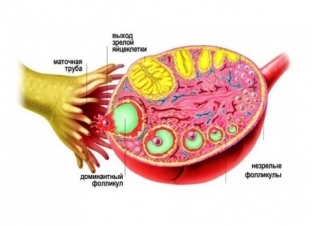The inability to conceive a child is a very urgent problem of our time. Many couples have been unsuccessfully trying to get pregnant for years, and it takes so much time because the cause that provoked infertility can be the pathology of many organs and body systems. The complexities of the diagnostic process cause long-term infertility in both men and women. Adrenal hyperandrogenism in women is one of the most common pathologies that cause infertility. Timely diagnosis of pathology and selection of the most effective therapeutic regimen will help many couples realize their main dream - to give birth to a child.
Adrenal hyperandrogenism in women: diagnosis and treatment
Since adrenal hyperandrogenism in women is a congenital pathology of the adrenal glands, manifested by a deficiency of the C21-hydroxylase enzyme in the woman's body, the diagnostic process of the disease should be based on laboratory and instrumental diagnostic methods, that is, a comprehensive examination of the body is necessary. The selection of a therapeutic regimen should be carried out only after a full diagnosis, in accordance with the individual characteristics of the course of the disease in each individual patient.
Adrenal hyperandrogenism in women:
- basic diagnostic criteria for adrenal hyperandrogenism;
- methods for diagnosing adrenal hyperandrogenism in women;
- treatment tactics for adrenal hyperandrogenism in women.
Basic diagnostic criteria for adrenal hyperandrogenism
Since the classic form of adrenogenital syndrome in adrenal hyperandrogenism manifests itself immediately at the birth of a child, the diagnosis of this pathology is not a difficult process. Much more problems arise during the diagnosis of pubertal or post-pubertal adrenogenital syndrome. The criteria for making this diagnosis are as follows:
- reproductive disorders in the patient's sisters on the maternal and paternal lines;
- late onset of menarche - 14-16 years;
- menstrual irregularities since menarche;
- virile features of the morphotype;
- historical miscarriage;
- Specific dexamethasone test results.
Methods for diagnosing adrenal hyperandrogenism in women
The diagnostic process of adrenal hyperandrogenism in women should begin with a detailed history taking. Since the disease is genetically determined, information about menstrual irregularities in the patient's relatives may lead to the idea of adrenal hyperandrogenism. The characteristic appearance of the patient, the presence of virilization symptoms also contribute to the diagnostic process. The main role in the diagnosis of adrenal hyperandrogenism in women is assigned to hormonal studies. The results of the dexamethasone test indicate the adrenal origin of androgens: the increased content of 17-KS in the urine and testosterone and dehydroepiandrosterone in the blood decreases to normal levels after taking dexamethasone. An ultrasound of the ovaries also provides important information:

Therapeutic tactics for hyperandrogenism in women has several main goals:
- normalization of the menstrual cycle and restoration of reproductive function;
- stimulate ovulation and maintain pregnancy to avoid miscarriage;
- elimination of the viril symptoms of hyperandrogenism in women.






Add a comment